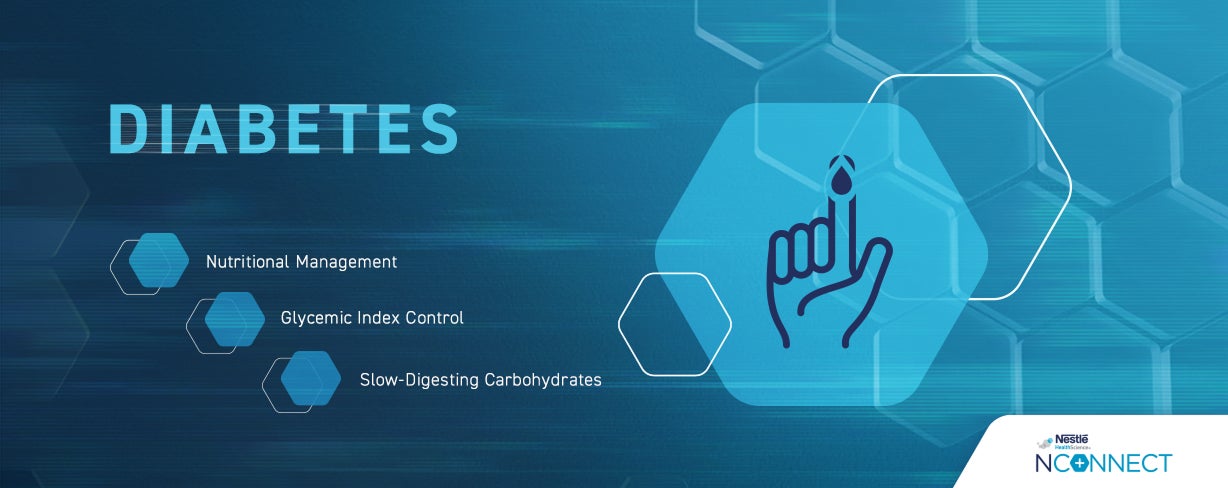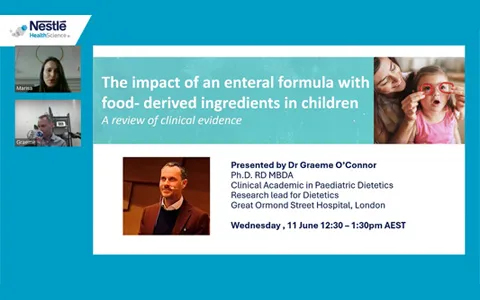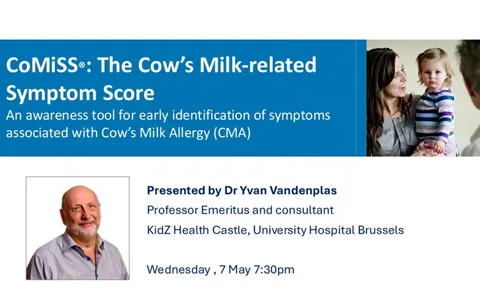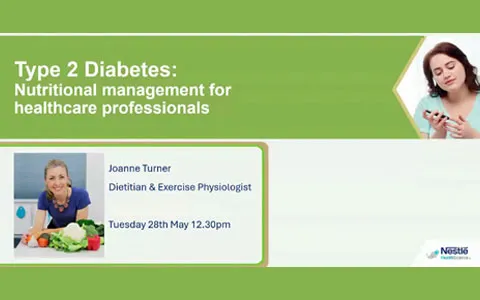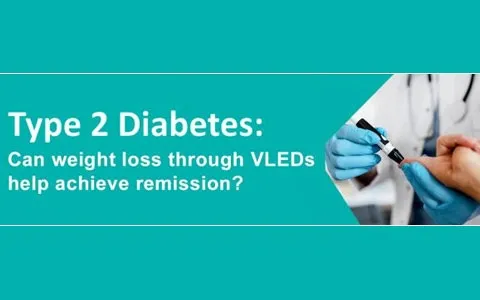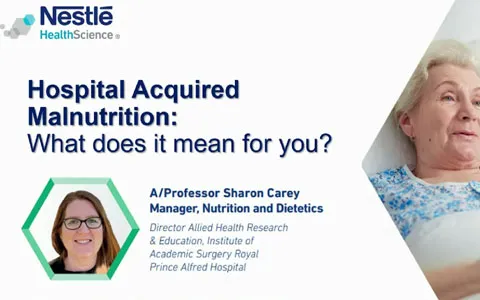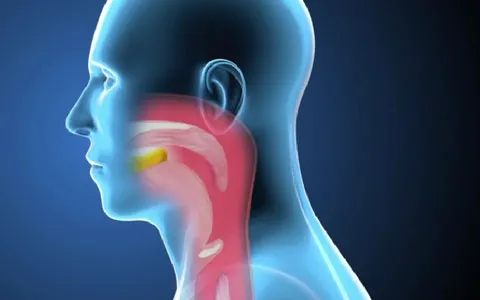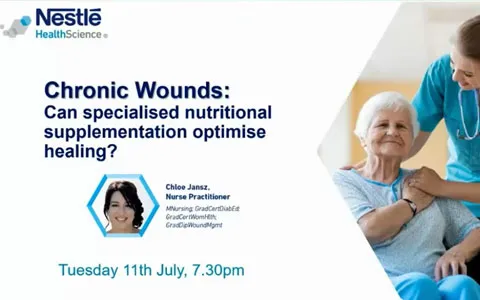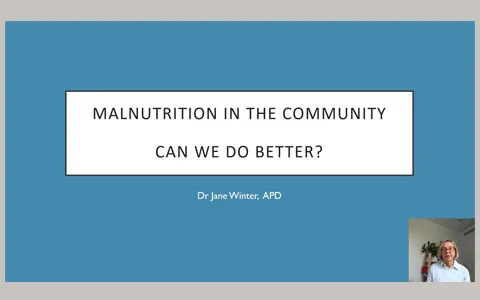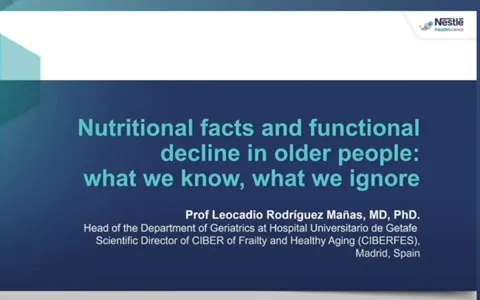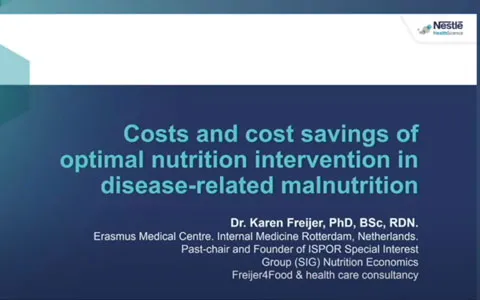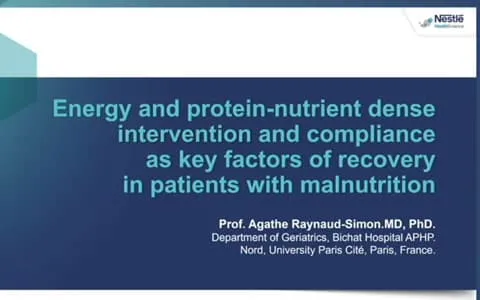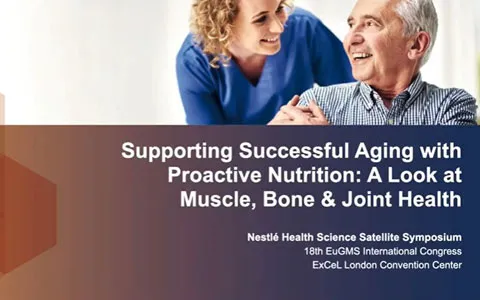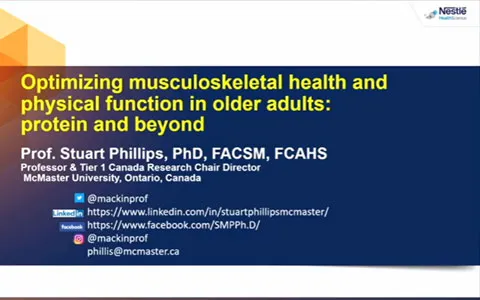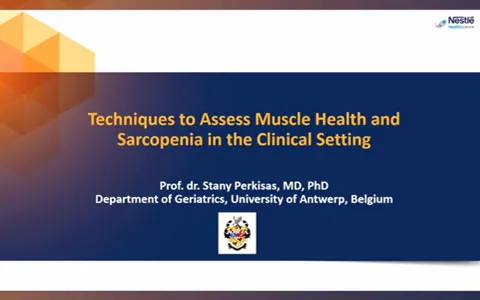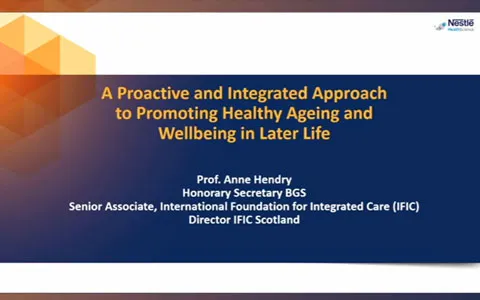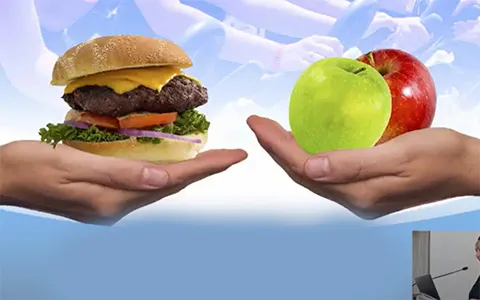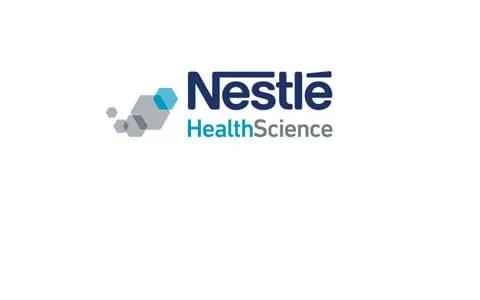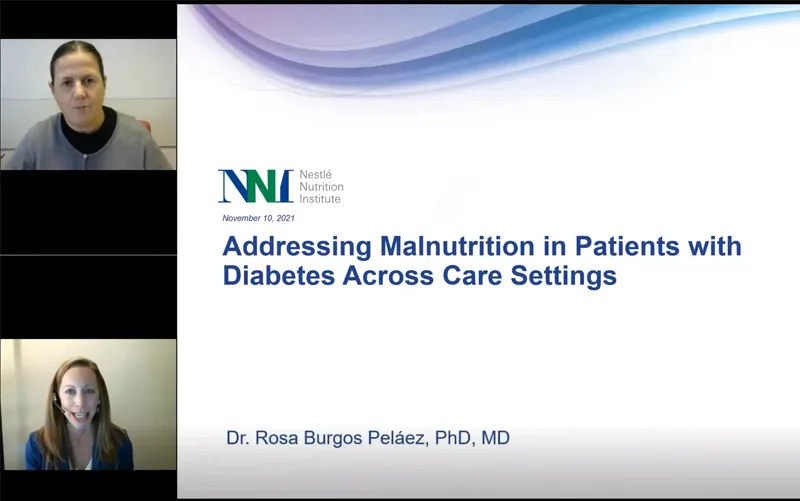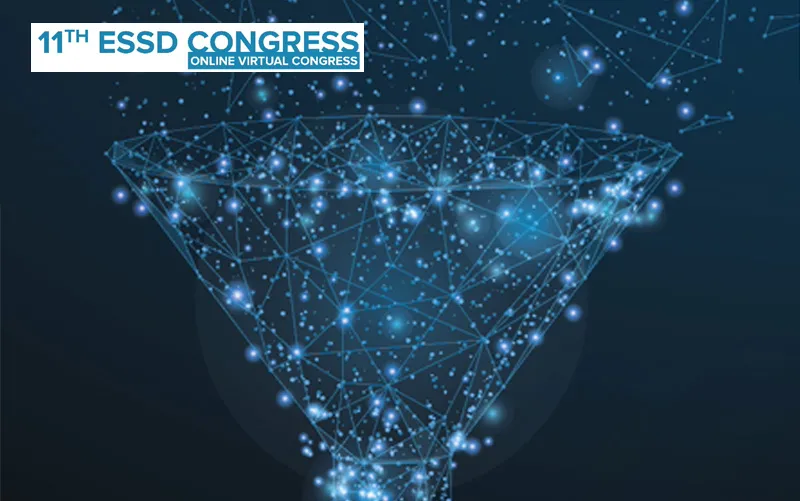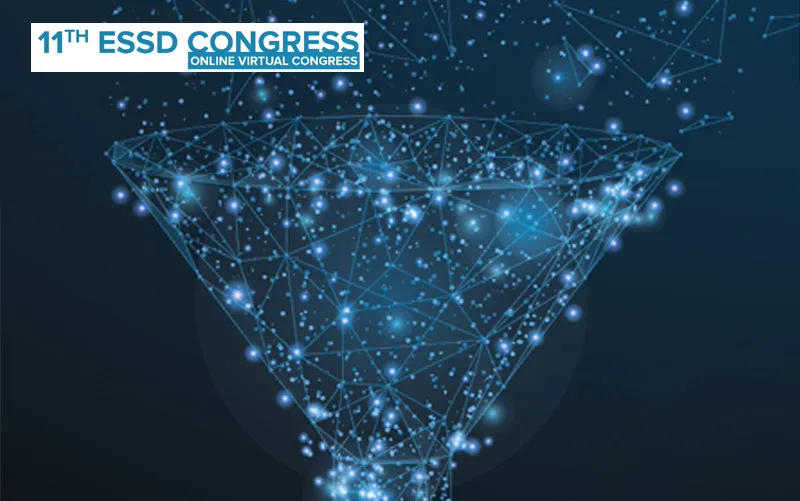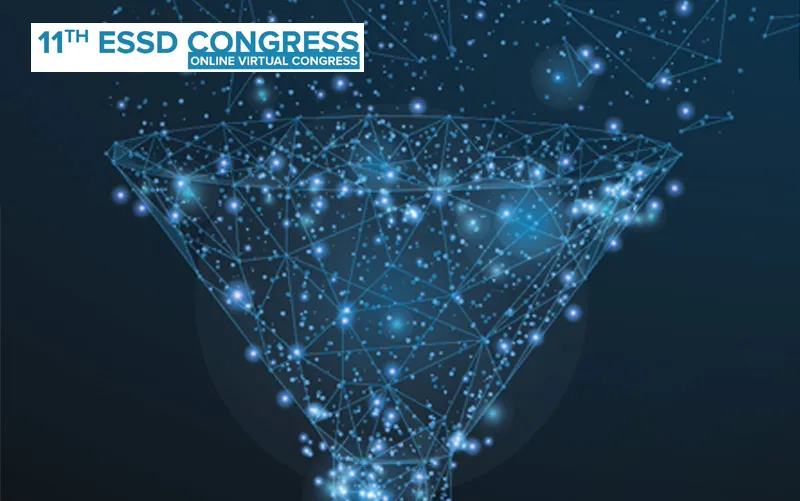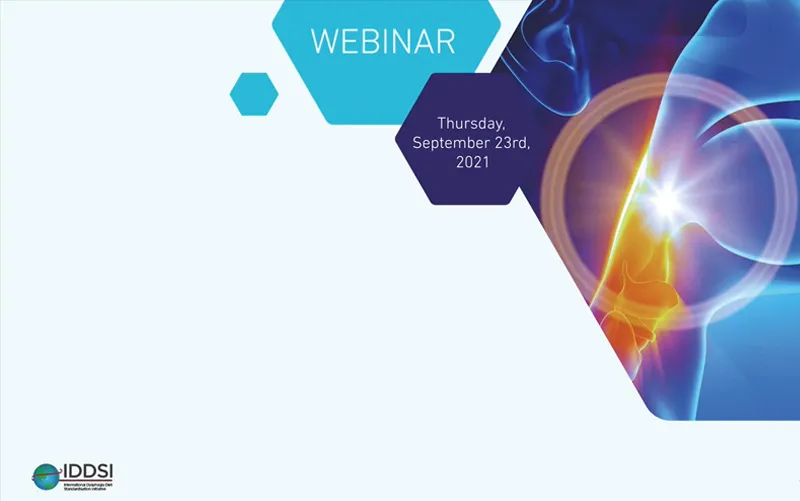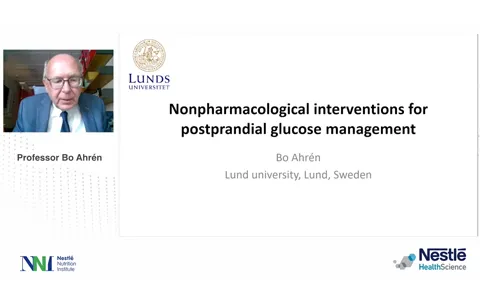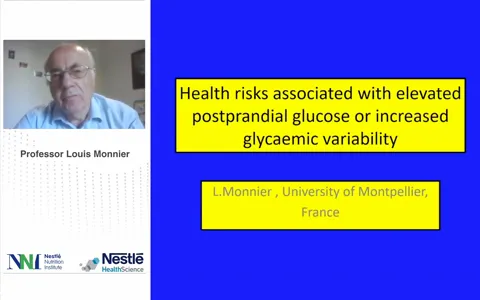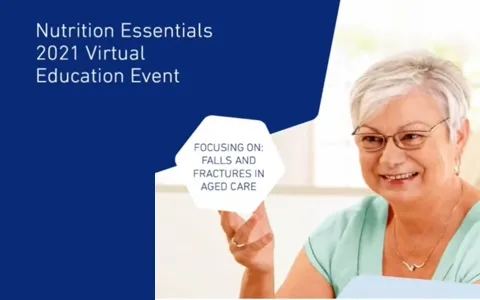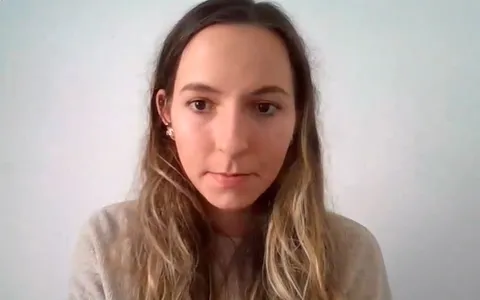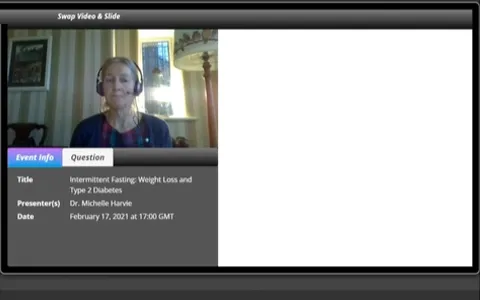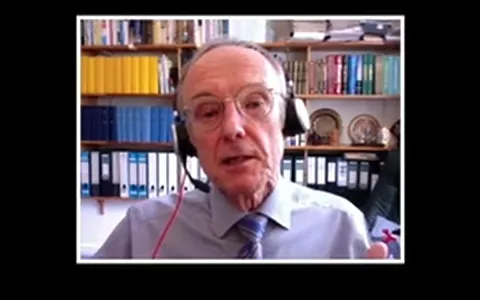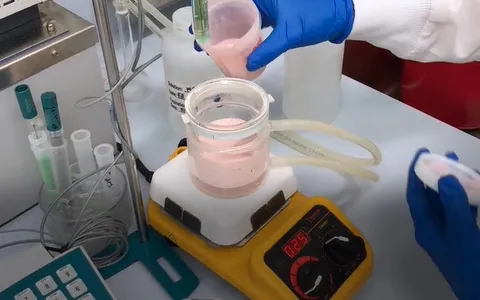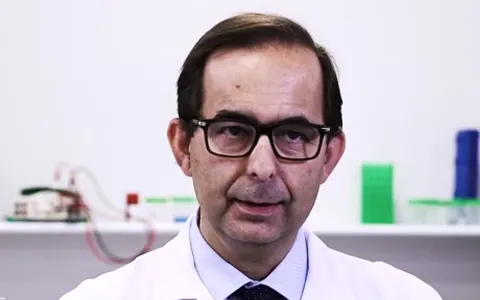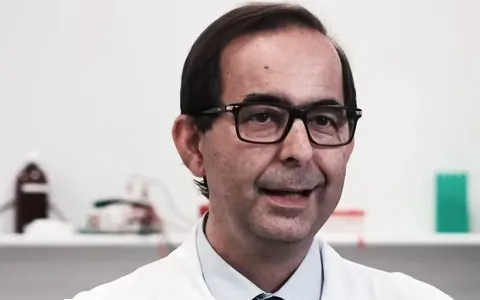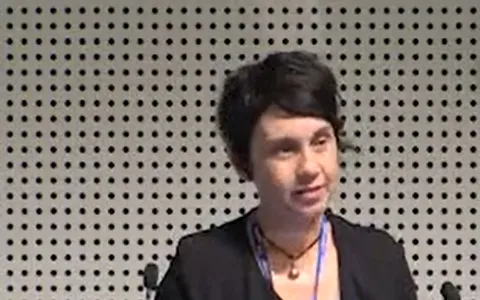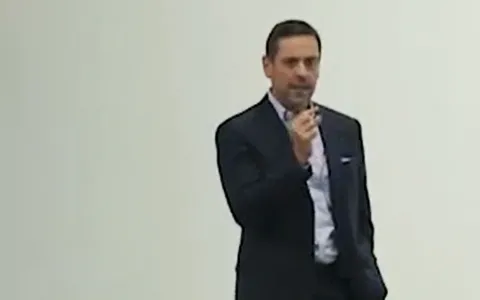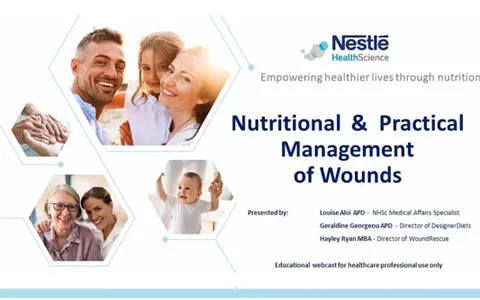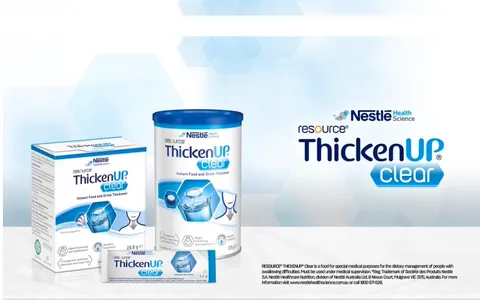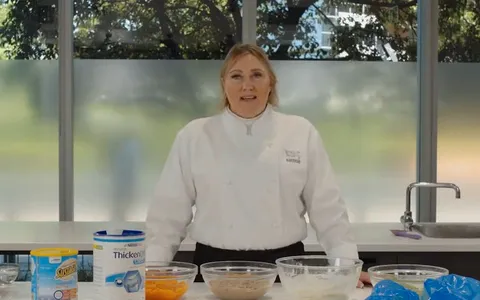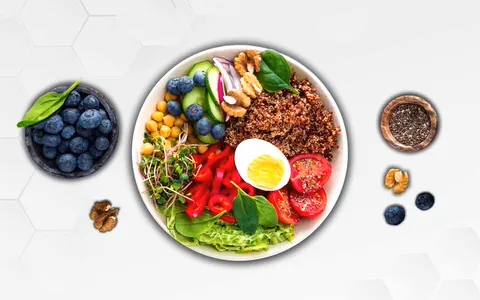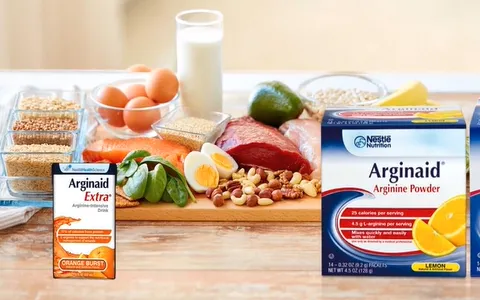Diabetes
Highlight of the month
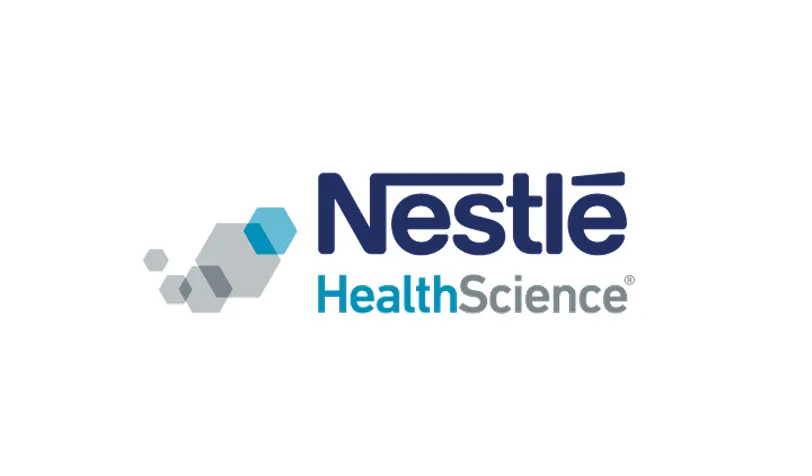
Nurturing the immune system in CMPA: The Role of HMO and Lactose in Formula-Fed Infants
Join Paediatric Gastroenterologist and Allergist, Dr Ralf Heine, for an insightful session exploring the emerging benefits of Human Milk Oligosaccharides (HMOs) and Lactose in formula-fed infants with Cow’s Milk Protein Allergy (CMPA). This webinar will highlight how these components support immune system development in a compromised population, offering a deeper understanding of their role in allergy management.
See moreVideos
Watch our webinar as Dr. Graeme O'Connor Ph.D., RD, MBDA reviews the clinical evidence on the impact of an enteral formula with food-derived ingredients in children.
In this webinar, Professor Yvan Vandenplas will provide an in depth explanation of the CoMiSS® tool and its practical application for infants in the primary care setting to help increase awareness of the most common symptoms of CMA that can aid an earlier diagnosis.
We heard from Joanne Turner, Dietitian and Exercise Physiologist from NuActive Health. Joanne talked us through the latest on nutritional management for Type 2 Diabetes.
Join Dr Mark Mellor (GP) and Dr Don Zhang (GP) for a conversation on their thoughts and experiences with weight management tools in primary care, including dietary restriction, VLEDs and GLP-1 RAs. Duration: 15 minutes.
Join Dr Terri-Lynne South (DP & Dietitian) and Leyanne Duncan (Diabetes Educator, Nurse Practitioner and Dietitian) for a conversation on their experience with the latest strategies and interventions for obesity management, including the usage of GLP-1 RAs and VLEDs as part of a blended approach. Duration: 15 minutes.
Presented by Prof. Michael Gold and Dr. Ralf Heine, this webinar explores the clinical impact and microbiome effects in infants with cow’s milk protein allergy who consume formula containing two Human Milk Oligosaccharides.
In this webinar, Paediatric Immunologist and Allergist Dr Annaliesse Blincoe and Consultant Dietitian Anna Richards will take you through a case study of a paediatric patient’s journey through food allergy, focusing on cow’s milk protein allergy from a medical and dietetic perspective.
This webinar presented by Dr. Jaci Barrett who is an Accredited Practising Dietitian. informs you of the history and development of the low FODMAP diet, current evidence for treatment for IBS, implementation of the diet as well further application outside of IBS such as its potential use for infantile colic.
An online video created by Nestle Health Science for parents explaining what cow's milk protein allergy is and how this can be managed through the usage of specialised formulas. These specialised formulas such as ALFAMINO which was developed by Nestle Health Science is for use in infants with severe cow's milk protein allergy and multiple food protein allergy.
The video provides in depth information on how patients should complete the process of bolus feeding as well as precautions that should be taken when tube feeding. Additionally, the video provides patients with information about the process of bolus feeding, why it is necessary and how the patient can manage it.
A webinar presented by Dr. Nicole Kiss on Malnutrition and Sarcopenia in oncology discussing what it's impact is and what we can do. This webinar provides information such as context around symptoms of Malnutrition and Sarcopenia such as nausea and vomIting as well as ways to manage and control these symptoms.
This video abstract provides an overview of DiRECT-Aus trial, which confirms that an intensive lifestyle intervention (very low energy diet) delivered in an Australian primary care setting results in remission of type 2 diabetes for one in two participants.
In this webinar, Jodie Bartle, Paediatric Dietitian, Oncology/Immunology at The Royal Children's Hospital Melbourne, takes us through the findings of her clinical research and how she arrived at a Nutrition Feeding Algorithm for Children and Adolescents undergoing Haematopoietic Stem Cell Transplantation (HSCT), to assist clinicians to make objective and consistent enteral feeding decisions.
We heard from Associate Professor Samantha Hocking from the Royal Prince Alfred Hospital. Samantha talked us through new research conducted by the University of Sydney, Diabetes Australia and five NSW Primary Health Networks on the current evidence for diabetes remission and the positive outcomes of this.
Hospital Acquired Malnutrition: What does it mean for you? Listen to A/Professor Sharon Carey, Manager Nutrition and Dietetics discuss how to effectively manage Hospital Acquired Malnutrition (HAM) and how individuals can be identified in the hospital setting. Sharon deep dives into the importance of documentation, explore the main reasons for Hospital Acquired Malnutrition (HAM) and the requirements for reporting.
The Hydration Status of Adult Patients with Oropharyngeal Dysphagia and the Effect of Thickened Fluid Therapy on Fluid Intake and Hydration: Results of Two Parallel Systematic and Scoping Reviews Click here to view the PDF.
Chloe Jansz discusses the wound management journey of real case studies of individuals with different types of chronic wounds. Learn about what to look for when assessing wounds, what tools are available in the wound consultant’s toolbox, and the importance of specialised nutrition to assist with the healing of chronic wounds.
Presented by Dr. Jane Winter, Accredited Practising Dietitian, this presentation helps us understand the extent of Malnutrition in the community, for us to be familiar with strategies to identify and recognize Malnutrition and to understand range of interventions available.
"Implications of Elevated Postprandial Glucose and Nutritional Approaches for Postprandial Glucose Management with a Focus on Whey Proteins". Dr. John Sievenpiper and Professor Bo Ahrén discuss postprandial glucose management at the 2022 58th EASD (European Association of the Study of Diabetes) Annual Meeting.
Prof. Leocadio Rodríguez Mañas presents at the 44th Congress of the European Society of Clinical Nutrition and Metabolism (ESPEN), 2022 on the role of nutritional status on function in older adults living in community, the role of key nutrients and effective interventions.
Dr Karen Freijer presents at the 44th Congress of the European Society of Clinical Nutrition and Metabolism (ESPEN), 2022. During this session, the burden of disease related malnutrition – with a focus on older adults– together with cost savings of optimal nutrition intervention and the importance of nutrition economics, will be discussed.
Prof. Dr. Agathe Raynaud-Simon at the 44th Congress of the European Society of Clinical Nutrition and Metabolism (ESPEN), 2022. This lecture will focus on patient-related and intervention-related factors that influence compliance, recovery from malnutrition, and other clinical outcomes in older malnourished patients.
Presented by Prof. Dr. Pedro Abizanda Soler at the EuGMS (European Geriatric Medicine Society) congress 2022. The presentation provides an overview on healthy ageing and the key elements that contribute disease, disability and reduced quality of life that can come with ageing.
Presented by Prof. Stuart Phillips at the EuGMS (European Geriatric Medicine Society) congress 2022. This presentation discusses in depth the role and amount of protein required in older adults to maintain muscle mass, and the important role of exercise on muscle in older adults.
Presented by Prof. Dr. Stany Perkisas at the EuGMS (European Geriatric Medicine Society) congress 2022. The presentation discusses various quick and non-invasive methods to measure muscle quality to determine status of sarcopenia in patients.
Presented by Prof. Anne Hendry at the EuGMS (European Geriatric Medicine Society) congress 2022. This presentation discusses a number of European frameworks that support successful healthy ageing promotion amongst communities in order to help reduce morbidity and mortality.
Presented by Professor Vickie Baracos, this looks at the evaluation of the nutritional status of the patients with cancer, causes of wasting and counter-measures: enabling dietary intake through effective symptom management: optimising the quantity and nutrient density of the diet.
Hear from Hayley Ryan, Director of Wound Rescue and Acting CEO of Wounds Australia, as she discusses the importance of nutrition in the management of wounds. This includes the requirement for sufficient protein and arginine - a conditionally essential amino acid which supports wound healing by promoting protein synthesis, nitric oxide production and collagen formation.
Pressure injury guidelines suggest high calorie/high protein nutritional intervention that contains supplemental L-arginine and increased amounts of zinc and other antioxidants for malnourished or at-risk patients with stage 2 or greater wounds. Dr. Fife shares her process of screening for malnutrition and the additional evidence supporting a nutritional algorithm used in her wound clinic. Two case study examples of limb salvage demonstrate use of high protein L-arginine supplemented immunonutrition.
This presentation discusses existing and new evidence supporting early and regular introduction of diverse food allergens at low doses. Of note, protein mixtures appear to show superior induction of an anti-allergenic state versus single foods, likely mediated by improvement in key biomarkers associated with sensitization.
This presentation discusses the importance of diet diversity (including food allergen diversity) with early introduction of allergenic foods between 4 to 6 months of age as part of a complementary diet recommended by the majority of medical and scientific societies worldwide, including EAACI.
Presented at Pediatric Allergy & Asthma Meeting (PAAM) Digital 2021. This is 20-year follow-up data from the GINI study showing that early nutritional intervention with extensively hydrolyzed casein formula (eHF-C) or partially hydrolyzed whey formula (pHF-W) when compared to cow’s milk based formula exerts a preventive effect on both eczema and allergic airway manifestation that endures until adulthood.
This presentation discusses the prevalence and impact of malnutrition in patients with diabetes and reviews key considerations for nutritional support of individuals with hyperglycaemia, obesity, and COVID-19 in hospital and post-acute care settings.
This webinar discusses current evidence for the management of Eosinophilic esophagitis (EoE). In addition, it includes clinical presentation and prevalence, evidence-based dietary therapy and nutrition management of EoE. The role of elemental diets in the management of EoE, including practical guidance on how to initiate and support compliance is also discussed and the role of the microbiome in EoE and how it correlates with disease activity is also explored.
Dr. Mary D. Litchford discusses the role of protein in preventing protein-malnutrition and sarcopenia, in patients with dysphagia at the European Society of Swallowing Disorders Congress, 2021. This is part of the Nestlé Nutrition Institute Symposium: Protein-Malnutrition, Sarcopenia and Dysphagia. How are they associated?
Dr. Hidetaka Wakabayashi from the Tokyo Women's Medical University Hospital discusses the association between patients with dysphagia, and protein-malnutrition and sarcopenia at the European Society of Swallowing Disorders Congress, 2021. This is part of the Nestlé Nutrition Institute Symposium: Protein-Malnutrition, Sarcopenia and Dysphagia. How are they associated?
Professor Pere Clavé discusses the association between malnutrition, sarcopenia and dysphagia at the European Society of Swallowing Disorders Congress from 2021. This is an introduction to the Nestlé Nutrition Institute Symposium: Protein-Malnutrition, Sarcopenia and Dysphagia. How are they associated?
IDDSI Adoption and Implementation is happening on a global scale. To facilitate and guide the process, the online video titled 'An International Perspective on IDDSI. Implementation and Clinical Practice' aims to help you learn and discover how to implement IDDSI into clinical practice from different perspectives.
"Nonpharmacological interventions for postprandial glucose management" from the NNI Symposium at the 2021 Virtual EASD Annual Meeting -- Postprandial Glycaemic Excursions: Implications for Health and Effects of Nonpharmacological Interventions. This video is presented by Professor Bo Ahren from Lund University.
"Health risks associated with elevated postprandial glucose or increased glycaemic variability" from the NNI Symposium at the 2021 Virtual EASD Annual Meeting -- Postprandial Glycaemic Excursions: Implications for Health and Effects of Nonpharmacological Interventions. Based on the 'Ominous Quartet' of glycaemic disorders.
In this webinar, Dr Luliano who is a Senior Research Fellow in the Department of Medicine at the University of Melbourne, explores the nutrition based approaches that can be utilised to address the very common issue of falls and fractures in the aged care setting and the relationship of these approaches to the revised quality standards in aged care.
In this webinar, Dr. Mehal will discuss the pathogenesis of and NASH, proposed new terminology for Non-Alcoholic Fatty Liver Disease(NAFLD) and current treatment recommendations with a focus on the impact of weight loss on outcomes. Dr. Mehal also provides an overview of the prevelance of NAFLD from a global perspective.
This webinar presented by Dr. Michelle Harvie discusses the application and review of current literature on low energy restricted diets as part of intermittent fasting as as an alternative to weight management and type 2 diabetes. Dr Harvie also discusses the MIDDAS study in respect to it's design as well the findings of the study.
This webinar from the 81st American Diabetes Association presented by Dr. Ian J.Neeland and Professor Roy Taylor, discusses the current and emerging novel non-pharmacological approaches to the prevention and remission of type 2 diabetes, weight management, and CV risk reduction. This webinar also explores how visceral fat plays a role in the pathogenesis of obesity and co-morbidities.
This educational video provides an overview of diabetes and obesity. It briefly highlights the potential issues and challenges that may arise due to obesity and diabetes as well as the current research that is being completed by Nestle Health Science as well as products that are being designed specifically for patients in need of glycaemic control.
This online webinar presented by Professor Rene Rizzoli aims to highlight the role of proteins in older adults' malnutrition - proteins of bone health. This online webinar was presented at IAGG-ER Digital Forum on Aging. It also includes a number of recommendations on the optimal amount of dietary protein intake as well as oral nutritional supplements to take post-op to help improve dietary intake and reduce the risk of complications.
This online webinar presented by Professor Rene Rizzoli aims to highlight the role of proteins in older adults' malnutrition - proteins of bone health. This online webinar was presented at IAGG-ER Digital Forum on Aging. It also includes a number of recommendations on the optimal amount of dietary protein intake as well as oral nutritional supplements to take post-op to help improve dietary intake and reduce the risk of complications.
This online webinar presented by Professor Alfonso Cruz-Jentoft aims to highlight the role of proteins in older adults malnutrition - Proteins and Muscle Health. Presented at the International Association of Gerontology and Geriatrics for the European Region Digital Forum on Aging. The webinar also highlights the conceptual crossroads that may be crossed when we are malnourished or have low muscle mass.
This short video discusses the aspects and techniques that are currently available and being utilised in diagnosing dysphagia. The video also briefly outlines the phases that an individual who has been diagnosed or will be diagnosed with dysphagia will go through in which treatment is used to improve quality of life for a patient.
This 2 minute video is Dr Pere Clave discussing why dysphagia which is most commonly seen in elderly patients is becoming more prevalent. Dr Pere Clave also discusses the potential relationship between dysphagia and neurodegenerative diseases such as Parkinson's, Alzheimers, amyotrophic lateral sclerosis and multiple sclerosis.
This online webinar presented by Dr. Julie Cichero looks at the past, present and 30 years into the future for management of dysphagia. It also highlights the important role that inter-disciplinary collaboration (i.e. between nurses, chefs, doctors, dieticians etc.) plays in the past, present and future of the management of dysphagia.
This webinar presented by Dr. Doug Padden Jones, titled 'Translating Protein Research into Practice: Optimising Muscle Mass', discusses the consequences of sub-optimal dietary protein on muscle mass, strength and health and also critically evaluates the application of current dietary protein recommendations.
This online webinar called 'The Gut Microbiome, Probiotics and Prebiotics 101', presented by Professor Kevin Whelan, translates the basic science of the gastrointestinal microbiome into dietary management in practice. Professor Whelan specifically focuses on Probiotics and Prebiotics and it's role in maintaining a healthy gut microbiome as well as looking at evidence that may support this.
This video created by Nestle Health Science describes to patients suffering from chronic wounds the value of nutrition during wound management. It also outlines the various types of foods such as carbohydrates, proteins, vitamins and other minerals and the crucial roles that they play in the wound healing process.
An informative webcast from highly experienced and regarded dietitian Geraldine Georgeou (APD) and wound clinical consultant Hayley Ryan on the nutritional and practical management of wounds in everyday clinical practice. The webcast explores various topics such as the role of arginine in healing, the cost benefits of ARGINAID for faster wound healing in the institutional setting as well as the value and need for close collaboration with dietetics and wound care specialist nurses.
An online video created by Nestle Health Science showing how RESOURCE THICKENUP Clear can be used to thicken beverages according to the various IDDSI Framework levels. The video also provides patients with a number of considerations that should be made when utilising RESOURCE THICKENUP Clear to thicken up various liquids.
An online video demonstration on how to make textured modified roast beef, mashed potato and cooked vegetables using RESOURCE THICKENUP Clear and SUSTAGEN Hospital Formula Active Neutral, developed by Nestle Health Science. The video also provides viewers with all the necessary kitchen utensils that are required to cook this texture modified meal.
An online video demonstration on how to make textured modified puree fish and puree semolina chips with carrots and beans using RESOURCE THICKENUP Clear and SUSTAGEN Hospital Formula Active Neutral, developed by Nestle Health Science. The video also provides viewers with all the necessary kitchen utensils that are required to cook this texture modified meal.
A short online video developed by Nestle Health Science visually showing the benefits of structured lipids in the gut based around Alfamino. The video highlights the O-P-O structure as well as how it may assist in increasing bone mineral content and strength, increase sleep duration, improving healthy gut bacteria and reduce crying.
A online eLearning video for covering the value and importance of Oral Nutritional Supplements. The video also highlights the various oral nutritional supplements that Nestle Health Science has developed for times when the nutritional requirements cannot be met alone by diet. These products include but are not limited to RESOURCE 2.0, ARGINAID, SUSTAGEN Hospital Formula and RESOURCE Protein.
This video briefly describes the wound management process and outlines the key factors that help a wound heal such as the amount of protein, which a lack of can decrease capillary formation, collagen synthesis and fibroplast proliferation. The explanation of wound healing is accompanied by a description of the mode of action of argenine and ARGINAID in the wound management process.
